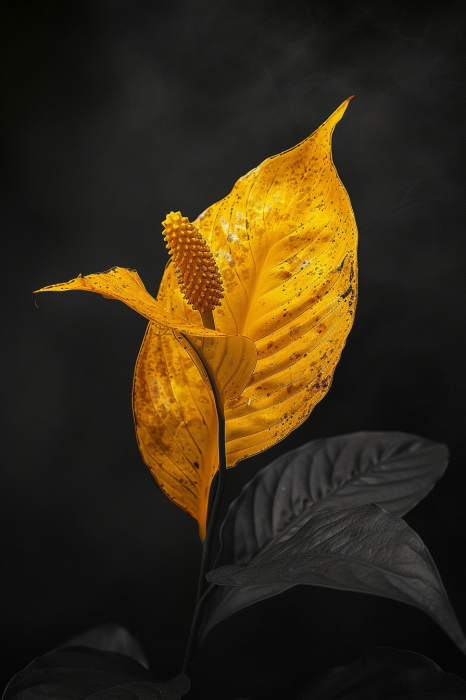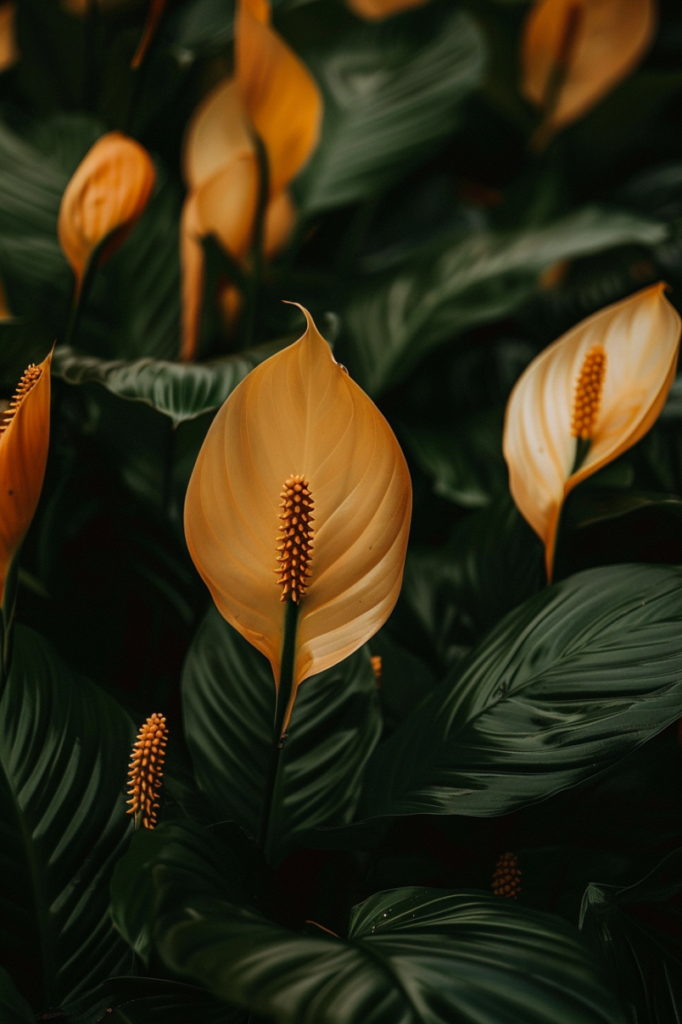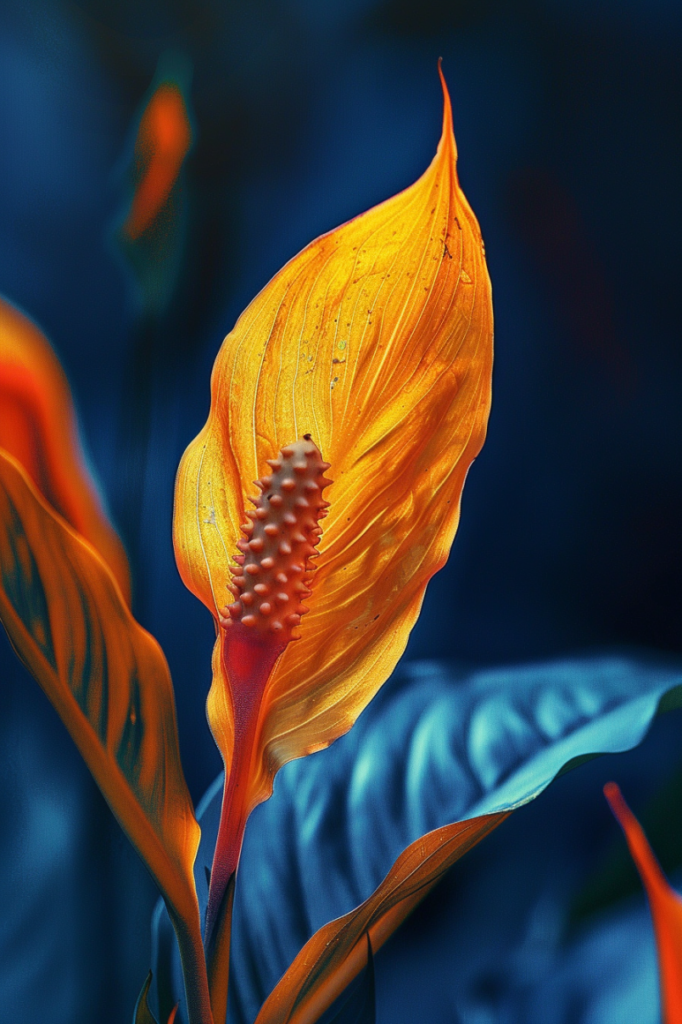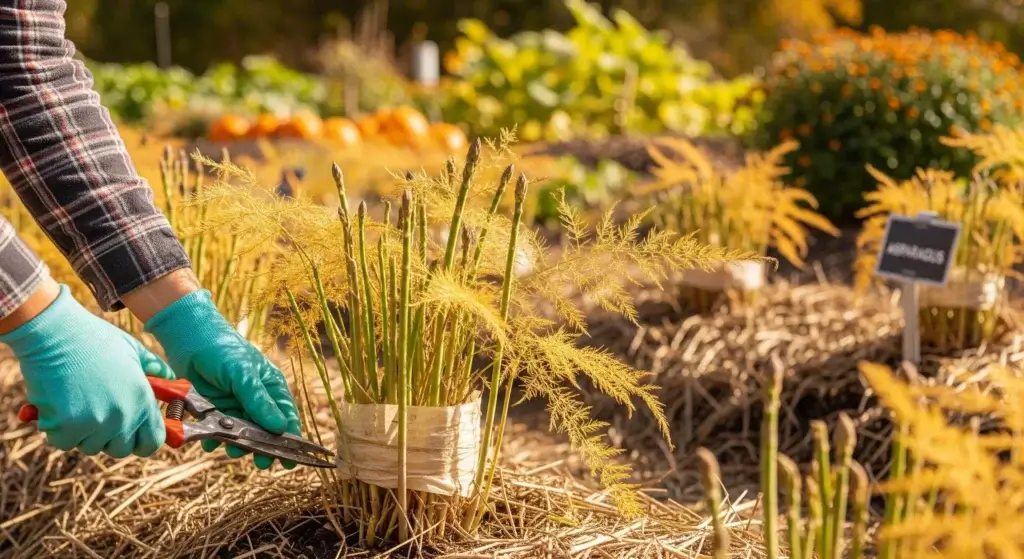
The peace lily (Spathiphyllum) is a popular houseplant known for its beautiful white flowers and air-purifying properties.
It’s a low-maintenance plant that thrives in indirect sunlight and moist soil.
However, leaves on a peace lily can turn yellow.
Yellow leaves on a peace lily can be worrisome, but it’s a common issue many plant owners face.
This article will explore the reasons behind yellowing leaves and provide solutions to address the problem.
With proper care, your peace lily will thrive for many years and add a touch of elegance to your home.
Why Does a Peace Lily Have Yellow Leaves
Peace lilies are native to tropical regions of the Americas and Southeast Asia.
Peace lilies are known for their lush, dark green foliage and white, trumpet-shaped “flowers” that emerge from a spathe (modified leaf).
Sometimes those leaves on a peace lily can turn yellow. A peace lily with yellow leaves can be a sign of several issues. Here are the common causes:
- Read also: Snake Plant Leaves Turning Yellow
- Read also: Yellow Leaves on Hibiscus: Causes and Treatments Tips
Watering issue
- Overwatering: One of the most common reasons for yellow leaves is overwatering. Peace lilies prefer moist soil but can suffer if the soil remains too wet.
- Underwatering: Peace lilies need consistent moisture, and if the soil is too dry, the leaves can start to turn yellow and wilt.
Lighting issue
- Too much direct sunlight: Exposure to direct sunlight can scorch their leaves, leading to yellow or brown discoloration.
- Insufficient light: On the other hand, if your peace lily isn’t getting enough light, it won’t be able to photosynthesize properly.

Low humidity
Peace lilies thrive in environments with high humidity.
Low humidity can cause stress to the plant, leading to yellowing and browning of the leaf edges.
Peace lilies prefer humidity levels between 50% and 60%.
When the air is too dry, the plant loses moisture more quickly through its leaves, causing them to dry out and turn yellow or brown.
Nutrient deficiency
A lack of essential nutrients can cause the leaves to yellow.
If the areas surrounding the veins in the leaves turn yellow, it could be a sign of a lack of nitrogen, iron, or magnesium.
Each of these nutrients plays a vital role in maintaining healthy, green foliage:
- Nitrogen: Necessary for chlorophyll production, which gives leaves their green color.
- Iron: Important for photosynthesis and overall plant health.
- Magnesium: A key component of chlorophyll and aids in energy transfer within the plant.
Poor water quality
Water quality can significantly impact the health of your peace lily.
Tap water often contains high levels of chlorine, fluoride, and other minerals, which can affect the soil’s pH and lead to yellow leaves.
These chemicals can be harmful to peace lilies.
Pests and diseases
Pests and diseases can also be culprits when it comes to yellow leaves:
- Pests: Common pests like spider mites, aphids, and mealybugs can sap nutrients from the plant, causing leaves to yellow.
- Diseases: Look for signs of infection, such as spots or mold, and treat with suitable fungicides or antibacterial treatments.
Natural aging
Sometimes, yellow leaves are simply part of the plant’s natural aging process.
As peace lilies grow, older leaves will yellow and die off to make way for new growth.
This is a normal process and not a cause for concern.
Regularly prune these old leaves to keep your plant looking healthy and tidy.

Can Yellow Leaves on a Peace Lily Turn Green Again
Unfortunately, yellow leaves on a peace lily cannot turn green again.
Once a peace lily leaf loses its chlorophyll (the pigment that makes leaves green), it cannot regain its green color.
Here’s how to handle yellow leaves on your peace lily:
Step 1: Identify the cause
First, try to figure out what’s causing the yellowing.
Common culprits include overwatering, underwatering, lack of light, or nutrient deficiency.
Look for other signs like drooping or dry soil to help diagnose the problem.
Step 2: Adjust care
Once you know the cause, address it based on a problem, by adjusting your watering habits, moving the plant to a more suitable location, or fertilizing it.
Step 3: Pruning
For yellow leaves that are unsightly or completely brown, you can prune them off.
Use sharp, clean shears to cut the stem of the leaf close to the base of the plant.

How to Prevent Yellow Leaves on Your Peace Lily
Peace lilies are beautiful and relatively low-maintenance plants, but yellow leaves can be a common problem.
Understanding the potential causes of yellow leaves is the first step.
Now, let’s explore how to address these issues and help your peace lily thrive:
Proper watering techniques
One of the most important aspects of caring for a peace lily is ensuring proper watering.
Peace lilies prefer consistently moist soil, but they don’t like to sit in water.
Here’s how to water them correctly:
- Check soil moisture: Before watering, check the soil moisture by sticking your finger into the soil about an inch deep. If it feels dry, it’s time to water.
- Watering schedule: A good rule of thumb is to water your peace lily once a week. Adjust your watering schedule accordingly.
- Avoid overwatering: Ensure that the pot has proper drainage to prevent water from accumulating at the bottom, which can lead to root rot.
Provide adequate light
Peace lilies thrive in bright, indirect light. Direct sunlight can scorch their leaves and cause yellowing.
Here’s how to provide the right lighting:
- Ideal location: Place your peace lily in a spot where it can receive bright, filtered light. A north or east-facing window is often ideal.
- Avoid direct sunlight: Keep your peace lily away from direct sunlight, which can cause the leaves to burn and turn yellow.
Increase humidity
Peace lilies love humidity and can suffer in dry indoor environments, especially during winter.
Increasing humidity around your plant can prevent yellow leaves:
- Humidity trays: Place your peace lily on a tray filled with pebbles and water. As the water evaporates, it will increase the humidity around the plant.
- Use a humidifier: A humidifier can help maintain consistent humidity levels, particularly in dry climates or during winter months.
- Misting: Regularly misting the leaves can also help increase humidity around your peace lily.
Fertilize appropriately
Feeding your peace lily with the right fertilizer is essential for its health. Here’s how to fertilize properly:
- Balanced fertilizer: Use a balanced, water-soluble fertilizer designed for houseplants.
- Frequency: Feed your peace lily every 6-8 weeks during the growing season (spring and summer).
- Avoid over-fertilization: Follow the package instructions carefully to avoid over-fertilizing, which can harm the plant and cause yellowing leaves.
Using proper water quality
The quality of water you use can significantly affect your peace lily’s health. Chlorine and fluoride in tap water can be harmful:
- Chlorine: To remove chlorine, let the water sit out for 24 hours before using it to water your plant.
- Fluoride: Fluoride cannot be removed by letting the water sit. Use distilled, filtered, or rainwater instead.
Pest control
Regular inspection for pests is crucial for maintaining your peace lily’s health. Here’s how to keep pests at bay:
- Inspect regularly: Check your peace lily regularly for signs of pests such as aphids, spider mites, and mealybugs.
- Treat pests: If you find pests, treat the plant with insecticidal soap or neem oil. These treatments are effective and safe for houseplants.
- Good air circulation: Ensure good air circulation around the plant to prevent fungal infections and pest infestations.

- Read also: Gardening Hacks: Solving the Yellow Leaf on Pothos
- Read also: Yellow Leaves on Orchids: Here’s What You Need to Know
Conclusion
Yellow leaves on a peace lily can indicate several problems, such as overwatering or low humidity.
Unfortunately, once a leaf turns yellow, it won’t turn green again.
However, you can stop more leaves from turning yellow by identifying and addressing the underlying issues.
With proper care, you can keep your peace lily healthy and vibrant. Remember, a bit of attention can make a big difference in maintaining your plant’s health.
FAQs
Leaves on a peace lily can turn yellow due to overwatering, underwatering, low humidity, inadequate light, nutrient deficiencies, poor water quality, pests, diseases, or natural aging.
No, direct sunlight can scorch the leaves. Peace lilies prefer bright, indirect light. A spot near a north or east-facing window is ideal.
You can increase humidity by using a humidity tray, placing a humidifier nearby, or misting the leaves regularly.



